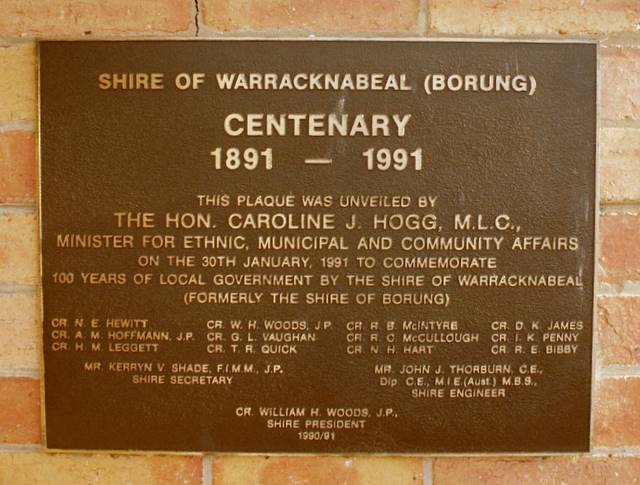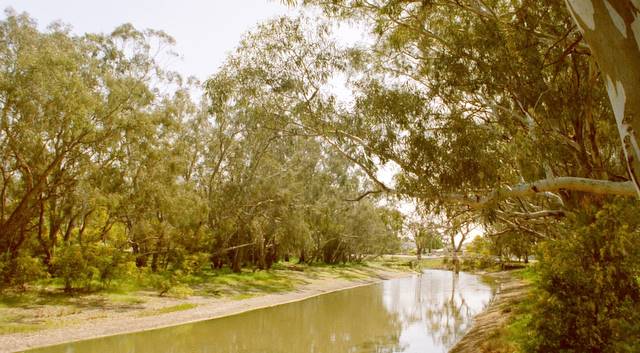
Aboriginal Astronomy Mysteries
by David R. Griffiths

In the west of Victoria lies a road named after an Aboriginal tribe famous for their knowledge of astronomy, the Borung highway. Their knowledge which has parallels with our Greek astronomical heritage, is now being re-popularised.
Driving down the Western Highway you pass the majestic Grampians between Stawell and Horsham. You then enter wheat country as you approach Dimboola.
Dimboola is the gateway to the Little Desert National Park, the Wimmera River is flanked by gums and boasts a rowing club. From here the Borung Highway connects to Charlton on the Calder Hwy.
Getting off the main highway gives and immediate sense of peace, the joy of being practically the only car on the road.

Alongside the sandy soil is sprinkled with golden wildflowers.
A road turn off is to Willenabrina. We are in the Shire of Yarriambiak, if we care to know of it, Aboriginal heritage exists all around us.
The empty road has wide flat fields extending to the horizon and a big open sky - never the less, while it could be the land of the Borung they actually lived further north, near Lake Tyrrell.
The Borung (also spelt Boorong or Booroung) in 1857 were described to a gathering of Melbourne's early scientific community as "priding themselves on knowing more of Astronomy than any other tribe".
Wm. Edward Stanbridge Esq., of Wombat detailed the beliefs of the Borung, a record which has proven valuable today. (click here for Stanbridge, W.E. (1857) "On Astronomy and Mythology of the Aborigines of Victoria". Proceedings of the Philosophical Institute, Melbourne.)
Amongst their beliefs Marpeankurrk (Arcturus - the fourth brightest star in the sky, visible in the northern sky from autumn to spring) is the discoverer of the Bittur - the larvae of the wood ant which formed the main part of the diet for the Borung in the months of August and September.
Their stories are no different in style to those of the Greeks having both a direct reference to their daily activities, and also a mythological, moral meaning. Marpeankuurk is the mother of Djuit (Antares - the brightest star in Scorpius, and like Arcturus, a reddish star) and Weetkurrk (a neighbouring star).
Whilst in Greek legend Arcturus means "bearkeeper", neighbouring Ursa Major represents the nymph Callisto who was turned into a bear by Zeus's jealous wife Hera.
The Greek moralist Hesiod who lived in the eight century BC, wrote in his text "Works and Days": "When Zeus has finished sixty wintry days after the solstice, then the star Arcturus leaves the holy stream of Ocean and first rises brilliant at dusk. After him the shrilly wailing daughter of Pandion, the swallow, appears to men when spring is just beginning. Before she comes, prune the vines, for it is best so."
Thus for the Borung people Arcturus signaled the time to eat ant larvae, while for the Greeks it was time to prune vines. Before clocks and calendars the night sky itself marked the passage of seasons and activities in daily living.
Today the work of Edward Stanbridge has been used by Melbourne Academic Dr. John Morieson to teach Koori youth at Swan Hill TAFE aspects of their cultural heritage which have become lost. A programme was also produced for Melbourne Planetarium at Scienceworks.
Regrettably the Borung people are no more, most likely a result of dispossession and disease.
There is no one set of Aboriginal star beliefs however, as hundreds of tribes throughout Australia each had their own languages and mythic beliefs. Sometimes their stories can be similar, and at other times, quite different.
The word Borung means "night, darkness", and far from the city lights of modern life the stars still shine brightly against the dark velvet of space.
The first major town on the Highway is Warracknabeal, the word means 'mouth of creek with red gum trees'.
The Shire was originally named the Shire of Borung in 1891 by the Governor in Council when it was split off from the Shire of St. Arnaud. The name was changed in 1938 to the Shire Warracknabeal due to confusion in mail deliveries with the town of Borung near Boort and more recently in 1995 during Victorian Council amalgamations it was changed again to the Shire of Yarriambiak as Yarriambiak creek runs the whole length of the new local government body.

This is most likely where the name for the Borung Hwy. came from. Warracknabeal is a lovely town, well preserved. And the coolest place on a hot day is still the shade of the red gums at the Yarriambiak creek.
Leaving Warracknabeal the Borung Hwy. heads east toward Lake Buloke and Donald.
The Borung Hwy. ends at Charlton, the country has become more undulating now than the previous billiard table. Charlton, on the Avoca river was once home to John Curtin, our wartime Prime Minister.
Off the main traffic routes there is an interesting diversion to a world with a slower pace and links ancient and modern, on the Borung Hwy.
copyright (c) David R. Griffiths 2006